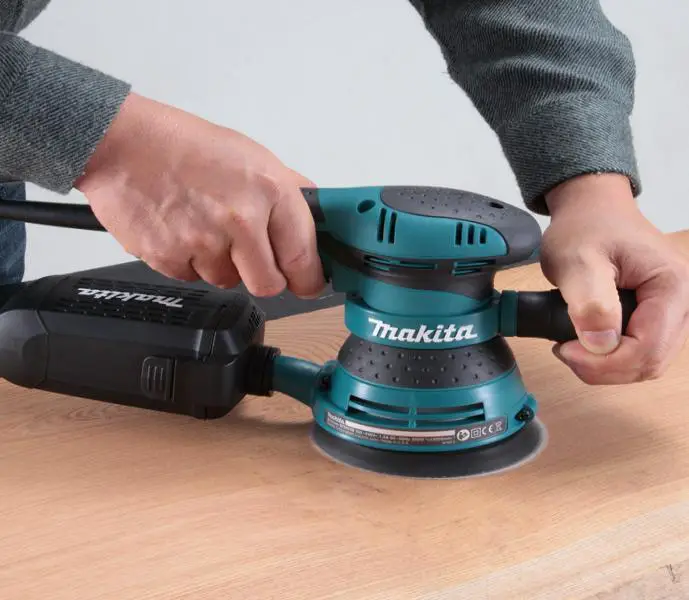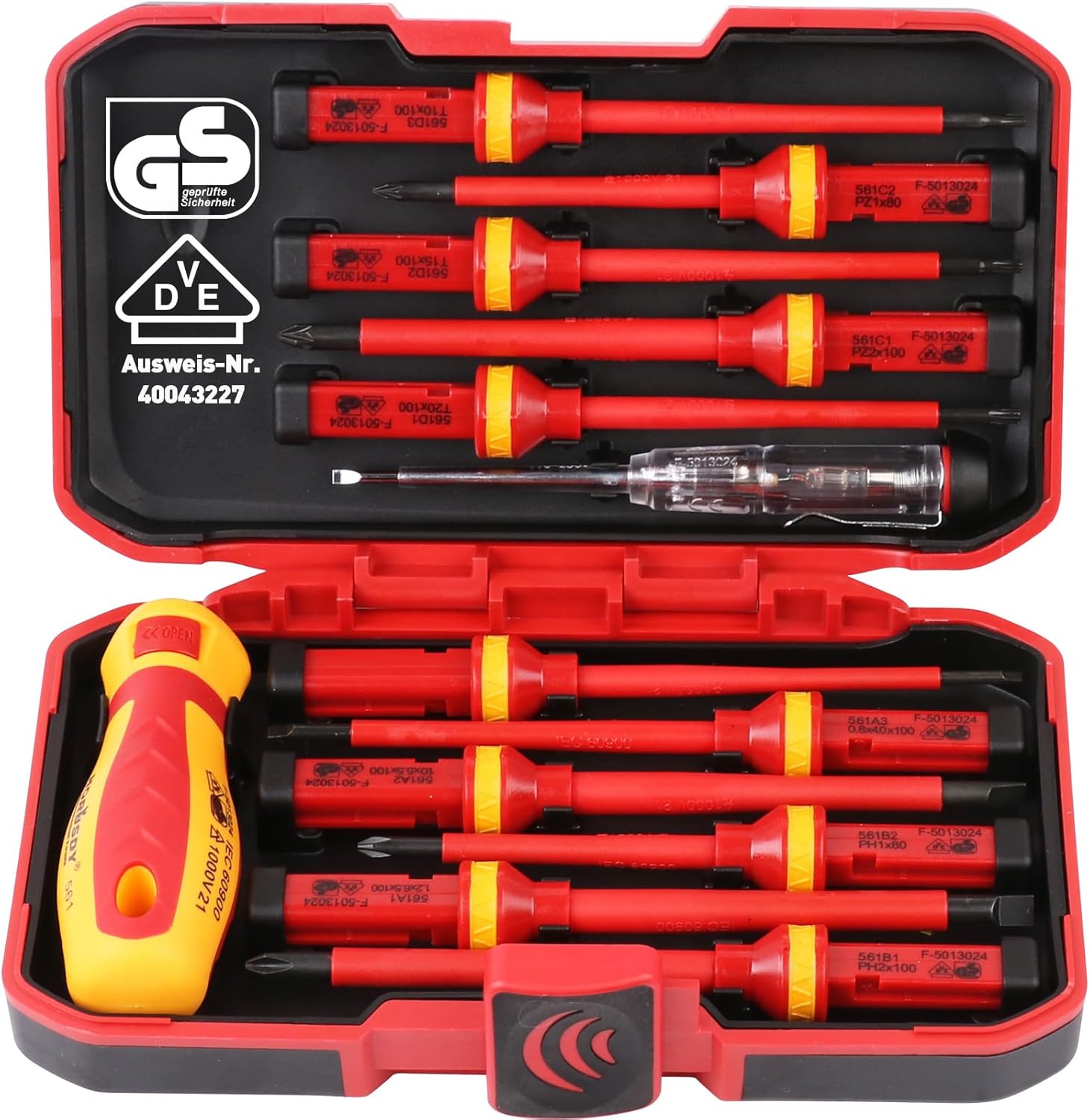When working on wood or metal projects, understanding the difference between random orbital and dual action sanders is essential to achieve the desired results. Both random orbital and dual action sanders are popular tools, but they operate in different manners and are suitable for different applications. This article aims to provide an overview of these two types of sanders, explaining their differences and helping you choose the right tool for your needs.
Random orbital sanders move in a circular motion and are known for their versatile application, from removing paint to smoothing rough surfaces, making them a popular choice for general sanding tasks. On the other hand, dual action sanders, also known as DA sanders, combine circular motion with an oscillating action. This unique combination allows for finer finishes on materials such as metal, fiberglass, and wood.
Selecting the right sander depends on the project requirements and personal preferences. By understanding the benefits and limitations of both random orbital and dual action sanders, users can make informed decisions and achieve optimal results on their projects.
Contents
- 1 Basics of Sanders
- 2 Mechanism of Operation
- 3 Motion and Orbit Comparison
- 4 Usability and Control
- 5 Finish Quality and Applications
- 6 Pros and Cons
- 7 Choosing the Right Sander
- 8 Frequently Asked Questions
- 8.1 How do random orbital sanders and dual-action sanders differ in their sanding motions?
- 8.2 What situations are best suited for using a dual-action sander?
- 8.3 Can a random orbital sander be used for polishing cars, similar to a dual-action polisher?
- 8.4 What are the limitations of dual-action sanders compared to traditional sanders?
- 8.5 In what applications would a random orbital sander be preferred over a rotary sander?
- 8.6 What factors contribute to the effectiveness of a dual action sander in auto body work?
- 9 Footnotes
Key Takeaways
- Know the differences between random orbital and dual action sanders for informed decisions.
- Consider project requirements and personal preferences when choosing a sander.
- Always prioritize optimal results and finish quality in your projects.
Basics of Sanders

Sanders are power tools designed to smooth surfaces by abrasion with sandpaper. There are various types of sanders, but in this section, we will focus on the differences between random orbital sanders and dual action sanders.
A random orbital sander moves in an elliptical pattern and is known for its versatility. It comes with a round sanding pad that moves in both a circular and back-and-forth motion, which helps to reduce swirl marks and provides a smoother finish1. One of the primary benefits of random orbital sanders is their ability to perform more aggressive sanding and be used for finer finishing applications as well.
On the other hand, a dual action sander (or DA sander) also has a round sanding pad, but it moves solely in a circular motion2. It is called “dual action” because it can be used for sanding, polishing, and buffing. DA sanders are often preferred for bodywork as they create less of a swirling design on the material being sanded.
Some key differences between these two types of sanders include:
- Motion: Random orbital sanders move in an elliptical pattern, whereas DA sanders move in a circular motion3.
- Finishing: Random orbital sanders generally provide a smoother finish due to their unique motion, reducing the chances of swirl marks.
- Versatility: DA sanders can be used for sanding, polishing, and buffing, making them more versatile than random orbital sanders4.
Overall, both random orbital and dual-action sanders have their specific uses and benefits. Choosing the right type of sander depends on the project and desired outcome you have in mind.
Mechanism of Operation
Random Orbital Sanders
Random Orbital Sanders (ROS) are versatile tools that use a combination of spinning and orbital actions. The pad in which the abrasive material is attached to rotates and oscillates simultaneously. This dual motion helps to reduce swirl marks and ensures a smoother finish.
- Spinning: The sanding pad rotates in a circular motion.
- Oscillating: The pad moves in a small elliptical orbit.
The user has less control over the ROS compared to a dual-action sander, as it relies on the momentum of its pad to drive the spinning motion. The oscillation creates a random pattern, which is ideal for minimizing swirl marks and achieving a uniform finish.
Dual Action Sanders
Dual Action (DA) Sanders, also known as forced rotation dual-action sanders, have a different mechanism of operation. The pad rotates in a circular motion while also oscillating, similar to a ROS. However, the key difference lies in the forced rotation that drives both the rotating and orbiting motions.
- Forced rotation: The motor directly powers the rotating movement of the pad, ensuring consistent motion and increased control.
DA Sanders can operate in two modes:
- Rotary mode: Similar to a disk sander, the pad moves purely in a rotating motion.
- Orbital mode: The pad oscillates in a back-and-forth motion like a belt sander.
The speed range of a DA sander varies from 2,000 to 10,000 RPM, allowing for greater flexibility when working on different materials and tasks. The forced rotation in a dual-action sander provides better control, making it the preferred choice for polishing applications.
Motion and Orbit Comparison
Random Orbital Motion
A random orbital sander moves in an unpredictable and irregular pattern. This unique motion reduces the visibility of cross-grain scratches on the surface being sanded. Random orbital sanders utilize a sanding pad that oscillates in tiny circles or orbits while simultaneously spinning around its central axis. This dual movement allows the sander to cover a wider area in less time, resulting in a smoother and more even finish. The random motion of this type of sander makes it less likely for the same grit grain to repeatedly grind the same area, thereby reducing the risk of visible swirl marks.
Dual Action Motion
A dual action (DA) sander, also known as a random orbit sander, shares similarities with random orbital sanders in terms of motion. However, the key difference lies in the versatility of the DA sander. It can be used not only for sanding but also for polishing and buffing surfaces. The DA sander moves in a combined circular and back-and-forth motion, which contributes to its versatility.
- Sanding: For sanding purposes, the DA sander operates much like a random orbital sander, albeit with more capabilities. The sanding pad both oscillates and spins, allowing for an even finish with minimal cross-grain scratching.
- Polishing and Buffing: When used for polishing and buffing, the DA sander can be switched to a mode where the spinning motion is removed, leaving only the back-and-forth oscillation. This allows for a controlled and focused polishing action, resulting in a high-quality, glossy finish.
In conclusion, random orbital and dual action sanders are similar tools with distinct motion patterns. The random orbital sander performs well in sanding tasks, while the DA sander offers greater versatility, allowing it to function as both a sander and polisher. Choosing the right tool depends on the specific needs of the project and the user’s preferences for versatility and ease of use.
Usability and Control
Ease of Use
Random orbital sanders are known for their ease of use, as they operate with a simple circular motion. This allows users to control the sander both horizontally and vertically on flat surfaces with minimal effort. They are also effective when dealing with fragile materials with lighter imperfections, as the random orbit motion helps to prevent patterns or gouges in the material being sanded. However, one downside is that they might not be the best option for deep sanding tasks.
On the other hand, dual-action sanders require more skill to operate effectively, as they combine both circular and oscillating motions. This allows for more aggressive sanding, but it can also increase the risk of damaging the material if not used properly.
Control during Sanding
Both types of sanders offer adjustable features for better control during the sanding process. Random orbital sanders usually offer multiple speed control options, which allow users to select the appropriate speed for the task at hand, ensuring a smoother finish. Moreover, these sanders typically feature adjustable handles for better ergonomics and ease of use when working on materials of different sizes and shapes.
Dual-action sanders, though slightly more difficult to control compared to random orbital sanders, also come with adjustable speed settings. This means that users can adjust the sanding motion to suit the specific task, gaining more control over the end result. Additionally, these sanders may include features such as a soft-start mechanism that allows for gradual ramp-up of the sanding motion, minimizing the risk of damaging the material as users become accustomed to the tool.
In summary, while random orbital sanders are generally easier to use and offer effective control for more delicate tasks, dual-action sanders provide the benefit of increased versatility when it comes to more aggressive sanding applications. Utilizing the appropriate tool for the task at hand will ensure optimal results and improved control during the sanding process.
Finish Quality and Applications

Quality of Finish
When comparing the finish quality of a dual-action sander and a random orbital sander, it is important to understand the differences in their motions. A dual action sander moves the sanding pad in both a circular motion and an oscillating motion, while a random orbital sander only moves the sanding pad in a circular motion 1. The random motion of a random orbital sander minimizes the risk of gouging and swirl marks, providing a much smoother finish 2. This is especially important when working on delicate or intricate surfaces.
In contrast, dual-action sanders can provide a more aggressive sanding action due to their combined circular and oscillating movements. While this can result in a faster material removal rate, it may also potentially cause more visible swirl marks or scratches on the surface being sanded, especially if not used carefully.
Applications for Each Sander
The unique motion characteristics of both dual action and random orbital sanders lend themselves to different applications:
- Random Orbital Sanders are well-suited for:
- Light sanding tasks
- Preparing surfaces for painting or sealing
- Smoothing woodworking projects and furniture 3
- Dual Action Sanders are more suitable for:
- Heavy-duty material removal
- Automotive bodywork and refinishing
- Metalworking tasks such as deburring and surface cleaning 4
Overall, the choice between a dual action and random orbital sander will depend on the specific need of the project. Whether it’s a fine finish or aggressive material removal, considering the quality of the finish and intended application will inform your decision.
Pros and Cons
Advantages of Random Orbital Sanders
Random orbital sanders are versatile and well-suited for a variety of woodworking, automotive refinishing, and other industries. These sanders are known for their efficient material removal due to their combined spinning and random orbital motion, which allows for quick and effective removal of paint, rust, or other materials.
Some other advantages of random orbital sanders include:
- Ease of use: Their action is more like vibration, making them easier to wield than rotary or belt sanders.
- Less Swirl Marks: Random orbital sanders tend to leave fewer swirl marks on the material compared to dual-action sanders. This is a result of their random motion, which produces a more uniform finish.
- Versatility: They can handle different types of materials and projects, making them a great choice for DIY enthusiasts and professionals alike.
Advantages of Dual Action Sanders
Dual action (DA) sanders, also known as orbital sanders, are distinct from random orbital sanders due to their simple, circular motion. They are more effective on fragile materials with lighter imperfections, making them a good choice for woodworking projects that require a delicate touch.
Some benefits of dual action sanders include:
- Control: DA sanders are easy to control both horizontally and vertically on a flat plane, providing more precision during sanding.
- Adjustable Handles: Many dual-action sanders come with adjustable handles, allowing for improved ergonomics and increased user comfort.
- Multiple Speed Control Features: These sanders often have a variety of speed control options, giving users the ability to fine-tune their sanding according to their specific needs.
In summary, both random orbital and dual action sanders have their own unique advantages. Random orbital sanders are versatile and more suited for efficient material removal, while dual-action sanders offer precision and control for delicate projects. Consider the specific needs of your project to determine which type of sander is the best fit for you.
Choosing the Right Sander
When it comes to selecting the ideal sander for your project, it’s crucial to understand the differences between a random orbital sander and a dual action sander. Both types of sanders have their unique advantages, which make them suitable for various tasks.
Random orbital sanders operate in an elliptical pattern and are known for preventing swirl marks on the surface. They are typically more versatile than dual action sanders as they can be used for sanding, polishing, and buffing. When choosing a random orbital sander, consider factors such as motor size, body configuration, and pad size (either 5 or 6 inches) according to your workload. Expect to spend between $50 and $100 for a decent palm-size unit. In contrast, heavy-duty right-angle or in-line models can range from $150 to $200. A model with built-in dust control is highly recommended for better performance and convenience.
On the other hand, dual action (DA) sanders combine linear and circular movements, offering exceptional adaptability and ease of handling. They are suitable for sanding, polishing, and smoothing surfaces, making them popular among both DIY enthusiasts and professionals. A typical dual-action sander’s dimensions are around 14.6 x 7.5 x 6 inches, with a maximum output of 600 watts. Look for user-friendly features, safety mechanisms, and adjustable speeds when choosing a DA sander.
To further assist in your decision-making process, here’s a comparison of the two types of sanders:
| Feature | Random Orbital Sander | Dual Action Sander |
|---|---|---|
| Motion | Elliptical | Linear and Circular |
| Versatility | Sanding, Polishing, Buffing | Sanding, Polishing, Smoothing |
| Swirl Marks | Prevents Formation | N/A |
| Price Range | $50 – $100 (Palm-size) | N/A |
| $150 – $200 (Heavy-duty) | N/A | |
| Dimensions | N/A | 14.6 x 7.5 x 6 inches |
| Motor Output | Depends on Model | Up to 600 watts |
By evaluating your project requirements and understanding the specific features of random orbital and dual-action sanders, you will be better equipped to choose the most suitable sander for the task at hand.
Frequently Asked Questions
How do random orbital sanders and dual-action sanders differ in their sanding motions?
Random orbital sanders use an elliptical motion, while dual action sanders combine both rotary and orbital motions. The random orbital sander has a back-and-forth movement, providing a smoother and swirl-free finish. On the other hand, the dual-action sander provides a more aggressive and precise sanding action due to its combined motion source.
What situations are best suited for using a dual-action sander?
Dual action sanders are great for removing material quickly, especially in auto body work. They are ideal for smoothing surfaces, removing paint, and surface preparation. Additionally, DA sanders can be used for polishing surfaces, making them a versatile option source.
Can a random orbital sander be used for polishing cars, similar to a dual-action polisher?
Yes, a random orbital sander can be used for polishing cars, similar to a dual-action polisher. However, it’s crucial to use the appropriate sanding pad and polishing compound for the surface. Random orbital sanders provide a swirl-free finish, making them suitable for car polishing tasks source.
What are the limitations of dual-action sanders compared to traditional sanders?
Dual-action sanders can be slower and might not be the best option for deep sanding processes. They may also require more skill to operate, since controlling their dual motions can be challenging, especially for beginners source.
In what applications would a random orbital sander be preferred over a rotary sander?
Random orbital sanders are preferred for finishing tasks as they provide a smooth and swirl-free finish. They are ideal for woodworking projects, removing paint, and preparing surfaces where an even, fine finish is desired. Rotary sanders can leave swirl marks, making them less suitable for achieving a refined finish source.
What factors contribute to the effectiveness of a dual action sander in auto body work?
Dual-action sanders are effective in auto body work due to their combined rotary and orbital motions, which enable aggressive material removal and precise sanding. Their versatility, power and adjustable speed settings make them an excellent choice for various surface adjustments, paint removal, and smoothing tasks source.




Leave a Reply